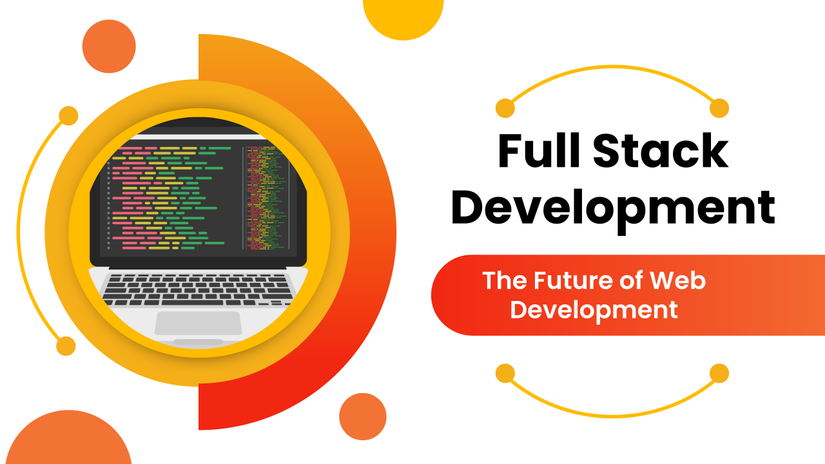Containerization and Deployment Strategies for Full Stack Developers

Achieving success in the rapidly evolving realm of software development hinges on scalability and efficient deployment strategies. Containerization stands out as a transformative force, revolutionising the landscape of application development, deployment, and management. This information delves into the realm of containerization and its impact on full-stack developers, exploring crucial concepts, benefits, commonly used technologies, and recommended approaches.
Understanding Containerization
Containerization facilitates the packaging, distribution, and operation of applications with greater efficiency and convenience. Containers encapsulate an application along with its dependencies, libraries, and runtime into a cohesive unit, distinct from traditional virtualization methods that involve running complete operating systems on a hypervisor. This encapsulated unit, known as a container, ensures consistent performance across diverse environments, promoting reliability and portability.
Key Concepts
Docker and Containers: Docker, a prominent containerization software, popularized the use of containers. Containers leverage Linux operating system capabilities such as groups and namespaces to create isolated and resource-efficient environments. Docker images serve as blueprints for containers, encapsulating the program, dependencies, and runtime parameters.
Orchestration: Container orchestration entails the management and coordination of multiple containers to ensure smooth operation. Orchestration tools automate operations like load balancing, scalability, and deployment. Google's Kubernetes has emerged as the industry-standard container orchestration platform, offering robust features for scaling containerized systems.
Benefits of Containerization for Full-Stack Developers
Consistency Across Environments: Containerization facilitates consistency across development, testing, and production environments by packaging dependencies along with applications. This mitigates issues such as the "it works on my machine" problem, streamlining collaboration between development and operations teams.
Isolation and Resource Efficiency: Containers offer high levels of isolation, enabling applications to operate independently. Utilizing namespaces and control groups, containers restrict and manage resource usage effectively, resulting in minimal CPU and memory overhead.
Scalability and Portability: Containerized applications inherently possess scalability capabilities, allowing developers to easily duplicate and scale containers horizontally to manage varying workloads. Moreover, containers' portability enables them to run seamlessly across different platforms, promoting flexibility and efficiency.
Rapid Deployment and Rollback: Containers facilitate rapid and consistent deployment of applications. Container images can be distributed across various environments, accelerating the deployment process, particularly in continuous integration and continuous deployment (CI/CD) pipelines. Containerization also simplifies rollback procedures, enabling swift recovery from issues or faults.
Containerization Tools for Full-Stack Developers
Docker: Docker plays a pivotal role in containerization, offering user-friendly tools for creating, distributing, and managing containers. Docker Compose simplifies the management of multi-container Docker applications through YAML-based configuration.
Kubernetes: Kubernetes, the leading container orchestration platform, automated deployment, scaling, and management of containerized applications. Its abstraction of underlying infrastructure simplifies application management across machine clusters, making it invaluable for managing complex architectures.
OpenShift: OpenShift extends Kubernetes with additional capabilities for developer and operational productivity. It simplifies app development and maintenance throughout the lifecycle, offering developer-friendly tools like source-to-image (S2I) builds.
Helm: Helm serves as a Kubernetes package manager, facilitating application deployment and management through pre-configured bundles known as charts. Helm charts are particularly beneficial for managing multiple microservices concurrently.
Best Practices for Containerization and Deployment
Design Microservices with Containers in Mind: Adopting a microservices architecture aligns well with containerization, promoting component independence and modularity.
Use Multi-Stage Docker Builds: Multi-stage Docker builds enable the creation of compact and efficient container images by utilizing various base images for different make phases.
Implement Infrastructure as Code (IaC): Infrastructure as Code ensures repeatability and consistency across environments, enabling simultaneous management of application code and infrastructure.
Monitor and Instrument Containers: Implementing logging, monitoring, and tracing mechanisms within containers facilitates performance monitoring and error identification.
Secure Containerized Environments: Adhering to security best practices, such as regularly updating base images and minimizing privileges, enhances container security.
Automate CI/CD Pipelines: Integrating containerized apps into CI/CD pipelines streamlines the development lifecycle, ensuring reliable delivery of best-quality software through automated testing, deployment, and rollback processes.
Challenges and Considerations
Despite its numerous benefits, containerization poses challenges for full-stack developers, including a learning curve, handling persistent storage, addressing networking complexities, and managing tool overhead.
Future Trends in Containerization
Trends such as serverless containers and edge computing are shaping the future of containerization, offering new opportunities for enhancing efficiency and performance.
Conclusion
Integrating containerization technologies like Docker and Kubernetes into a full-stack development course in Greater Noida, Kolkata, Faridabad, and nearest cities in India, would be immensely beneficial for aspiring developers. By incorporating these essential tools alongside best practices and emerging trends, students can gain practical experience and knowledge that aligns with the demands of the industry. Through hands-on exercises and real-world projects, learners can explore the efficiency, scalability, and consistency that containerization offers, empowering them to navigate the dynamic landscape of modern software development with agility and creativity.
All rights reserved